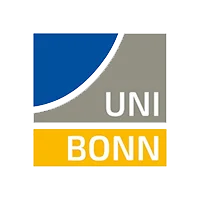Explore the credit course catalogue
3 Results

We will investigate mainly fish brains, but also some invertebrate model systems to get on overview of the major differences in neuronal organization between them. Sensory and motor pathways will be compared and pathways will be traced from primary sensory centres through higher integrative centres to motor command areas.

Topic 1: Pharmacologically relevant signalling pathways
Topic 2: Drugs for the treatment of pain: local anaesthetics, opioids
Topic 3: Drugs influencing vigilance: hypnotics, general anaesthetics
Topic 4: Treatment of psychiatric diseases: antipsychotics, antidepressants
Topic 5: Drugs of abuse: opioids, cannabinoids
Topic 6: Neurodegenerative disorders
Methods 1: Drug mechanisms and signalling in neurons
Methods 2: Modulation of neurotransmitter release in brain slices
Methods 3: Standard behavioural tests in drug development - pharmaceutical industry
Methods 4: Development of innovative drugs – gene and cell therapies
Methods 5: Regulatory Affairs

Methodology and Theory of Cognitive Neuroscience:
- Psychology: what makes it a science?
- Experimental strategies: psychophysiology, neuropsychology
- Philosophical implications of cognitive neurosciences
Cognitive Neuroscience: main findings on brain-function relationships
Clinical Neurophysiology and Imaging:
- Electroencephalography (EEG) as a neurodiagnostic tool
- Advanced methods of EEG analysis: coherence, fast Fourier, non-linear and other analysis
- Structural and functional brain imaging as neurodiagnostic tools
Experimental Psychophysiology:
- Electrophysiology: event-related potentials, non-invasive and invasive
- Magnetic resonance tomography: functional neuroimaging (fMRI)
Clinical Neuropsychology:
- Neuropsychological assessment
- Cortical electrostimulation
- WADA test
6. Experimental Neuropsychology
- Animal models of behavioural deficits in epilepsy


